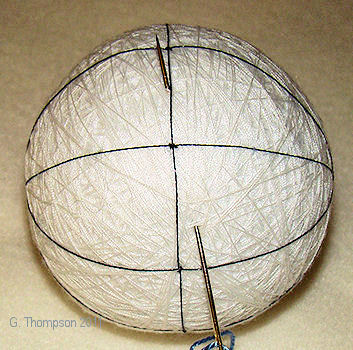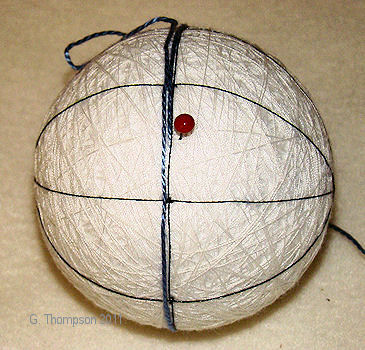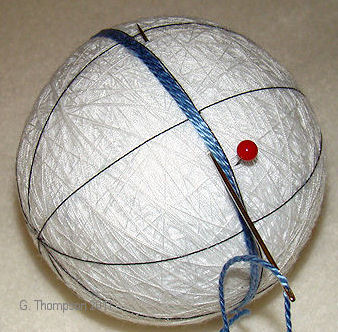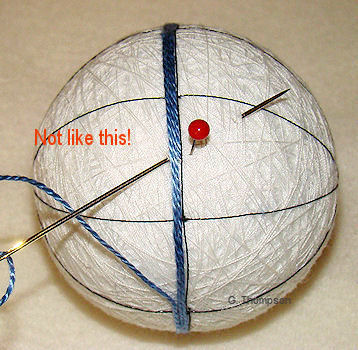TemariKai ToolKit - Maki Kagari 巻 きかがり
Maki Kagari is the term for wrapping threads around the mari to form bands of color. Often the bands will be interwoven or layered in some sort of design, or they can stand alone as for example, an obi design/enhancement. This technique is easy to learn and do, as
 |
Enter the thread and come up just to the side of the marking line. Notice the direction of the needle. To obtain smooth results so that the beginning and end of the thread cannot be seen in the band, keep the needle going in the direction of the thread wrapping. |
 |
Wrap the thread around the mari, being sure to stay close to the marking line, and keep the ensuing thread rounds close to each other. Place a pin where you entered the thread so that you can keep track of the number of rounds more easily and know where the starting point is. Circumscribe the mari as many times as the pattern requires for the width of the band or color set. |
 |
At the end of the band, carry the thread a few mm past the original starting point. Enter the needle into the mari very close (but not under) the last thread round, and carry it well past the end point, as close to parallel to the thread wrap as you can. These two things will give you a smooth start/stop, so that it's almost impossible to see the beginning and end of the band. If you are working a design with multiple bands, especially ones that are next to each other, be sure to stagger the starts and stops of the adjacent bands against their neighboring bands, as well. If the design calls for wrapping the band on the opposite of the marking line, shift to the other side by carrying the thread under the mari wrap, and repeat the process. Otherwise, end the thread. |
 |
Staggering the start and stop and keeping the needle/thread parallel to the band is so important, it bears an illustration of what not to do. Don't end at the same place that you started, and don't enter/exit the needle and thread on an angle to the band. |
This
is a TemariKai.com Printable Page; © 2014, all rights reserved.
Right click to print one copy for personal use.
Last updated 11/2015 © 1998 - 2014 G. Thompson/PuffinStuff, Inc.
